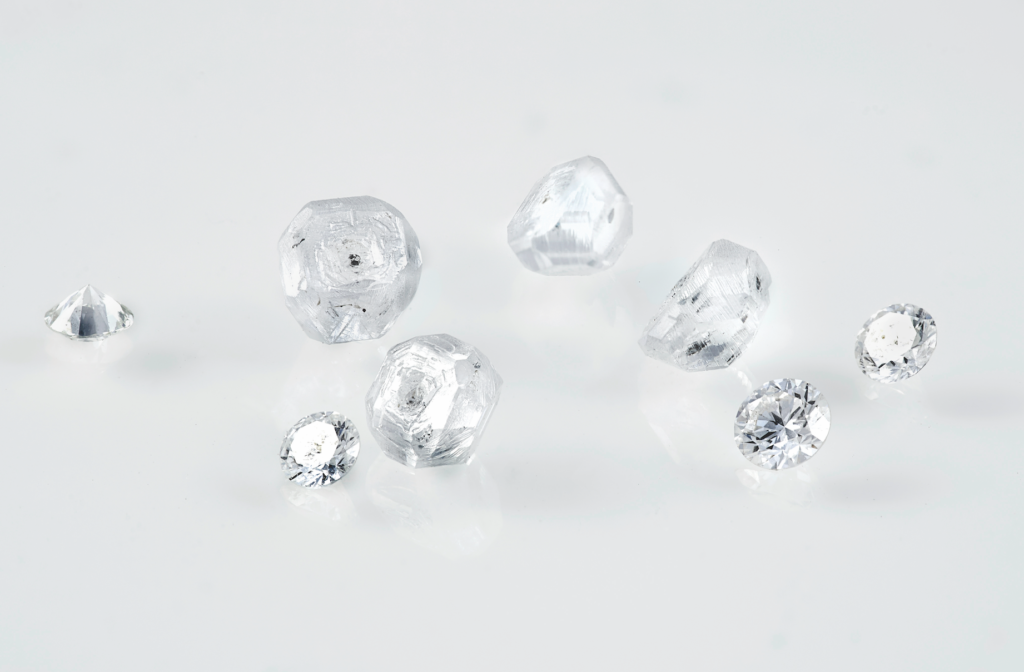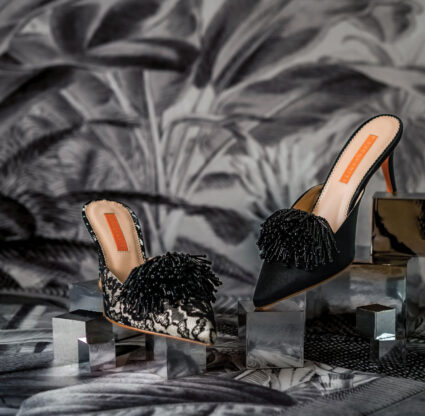As Brian and Elke Podlasek, of Fort Myers, readied to celebrate their 25th wedding anniversary in August, the husband wanted to mark the special milestone by upgrading his wife’s wedding ring. “It was time to put the big, beautiful rock on her finger,” Podlasek says.
While shopping at Mark Loren Designs, owner Mark Loren presented the couple with a new option: a lab-grown diamond. Placing three sizable stones in front of them—two natural diamonds and one lab-grown—Elke was unknowingly drawn to the lab-produced gem. “I loved the color of the stone and the way it sparkled,” she says. The couple settled on a 3.10-carat lab-created diamond, which Loren fashioned into a one-of-a-kind stunner. “When you lay it all out for customers, and show them one of each product, 50% are going for the lab-grown diamonds,” says Loren, who started carrying lab-created diamonds a few years ago. “It’s surprising us, too.”
While the word “lab-grown” may conjure thoughts of cubic zirconia and other synthetic stones, lab-grown diamonds are real diamonds—the difference is their origin.
Natural diamonds are formed deep beneath the Earth’s crust under intense heat and pressure, while lab-grown diamonds are created using various technologies—some replicate the natural process with high pressure and high temperature; others use the chemical vapor deposition method, where a diamond seed is heated in a reactor and pumped with carbon-containing gas until it crystallizes over several weeks. “Chemically they are exactly the same with minor variations in physical growth patterns, but the true difference is in the rarity,” Brian Denney, a gemologist with Gems of Note in Naples, says. “It requires advanced instruments beyond the microscope to distinguish lab-grown from Earth-mined.”

Although several jewelry stores that we reached out to locally are holding firm on exclusively selling natural diamonds, a major shift in the industry can’t be denied. In 2018, there was a turning point in the conversation when the Federal Trade Commission (FTC) declared lab-created diamonds as real (though companies must still clearly disclose them as man-made). The Gemological Institute of America (GIA) now grades lab-grown diamonds the same way as Earth-extracted, too; and Lightbox, a De Beers-owned company, has opened a $94 million manufacturing facility in Oregon with plans to produce 200,000 carats of lab-grown diamonds a year. “That’s a big step. You hear the name De Beers, a large company with mines all over the world, and the rest of the industry is going, ‘Wow, they’re getting into this in a big way,’” Loren says.
For many, the driving factor for choosing lab-grown is price. Currently, they cost around 30% to 40% less than natural diamonds of similar size and quality; it’s significantly cheaper to skip the long supply line. “It’s just another tool in our toolbox to take care of clients. Not everyone walks in with a $57,000 budget,” Loren says. “Customers recognize that they could take the remaining money and purchase a car or take an amazing trip.”
But if you ask someone like Denney, who deals in ultra-rare diamonds, you’ll hear a different take. “Ultimately, I would say not to buy them,” he says, pointing to minimal resale value. “Five to 10 years from now, they’re going to be worth 1% to 2%, almost nothing.” Additionally, he believes they lack symbolism. “It’s less meaningful to say, ‘Hey, we grew this in a lab, it’s not over a billion years old.’”

Loren, however, says that narrative is changing, especially with the younger generation. “They’re price-driven and quality-driven, but they don’t really care that it didn’t come out of the ground,” he says, adding that many also choose lab-created diamonds because they feel it ensures a conflict-free production process. (On the other side, people point to the heightened regulations and strides diamond companies have made in offsetting its environmental impact, creating fair-trade jobs and reinvesting in mining communities).
What everyone does agree on is that you should buy diamonds from a reliable source. While jewelers must disclose what they’re selling, individuals on the internet or at pawn shops can pass off lab-grown as Earth-mined. “I don’t think it hurts to have any diamond tested,” Denney advises.
Whether lab-grown diamonds are forever—or will fade in popularity—only time will tell. For the Podlaseks, nothing can dim the shine of Elke’s ring. “I receive incredible compliments,” she says. “No one ever questions where it came from.”





